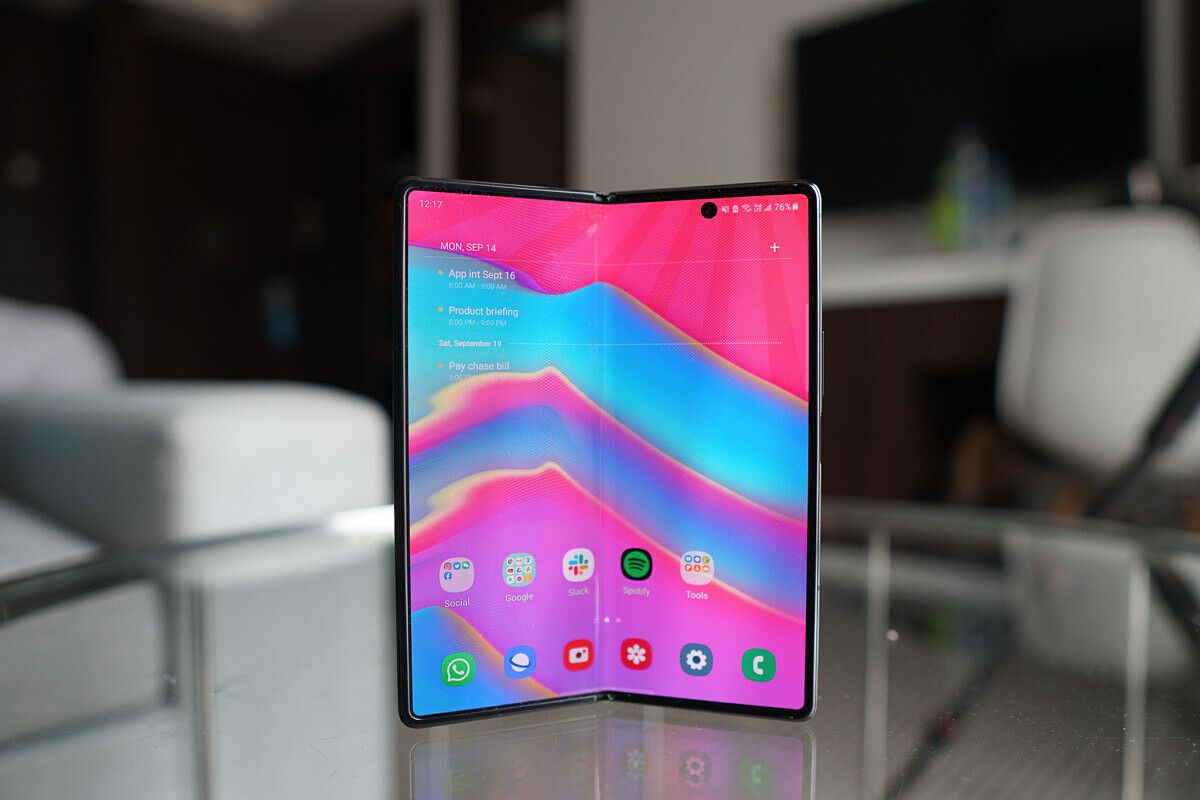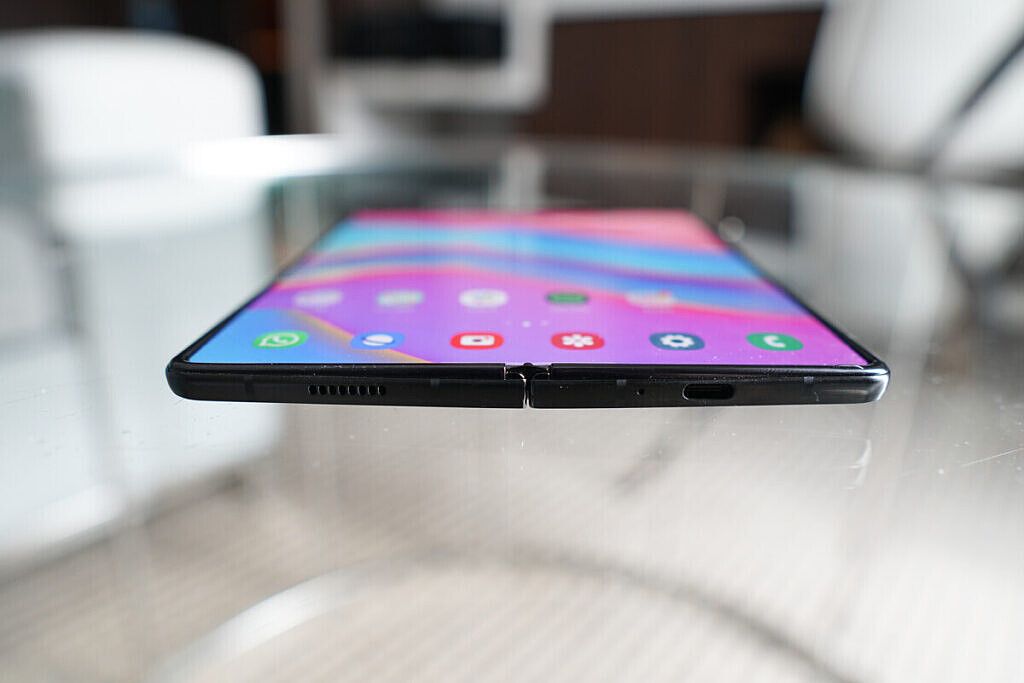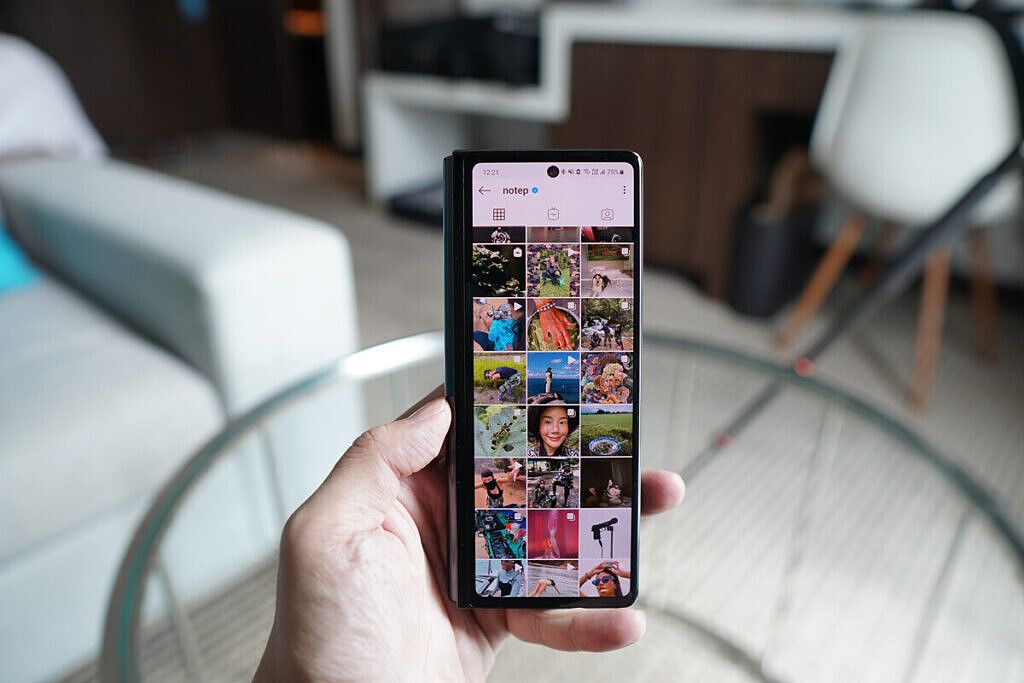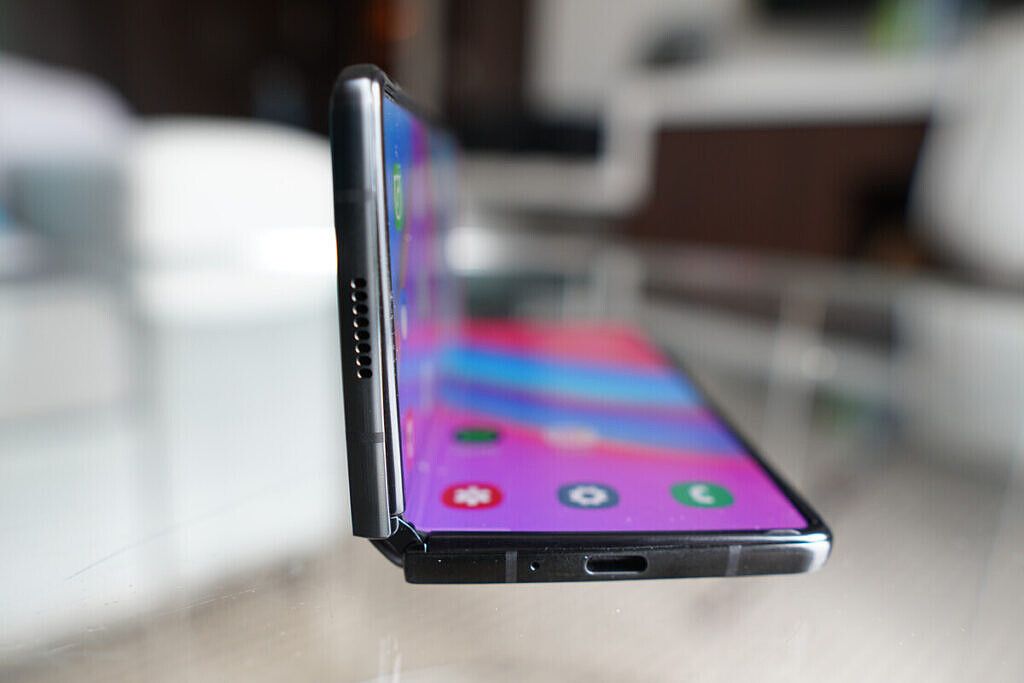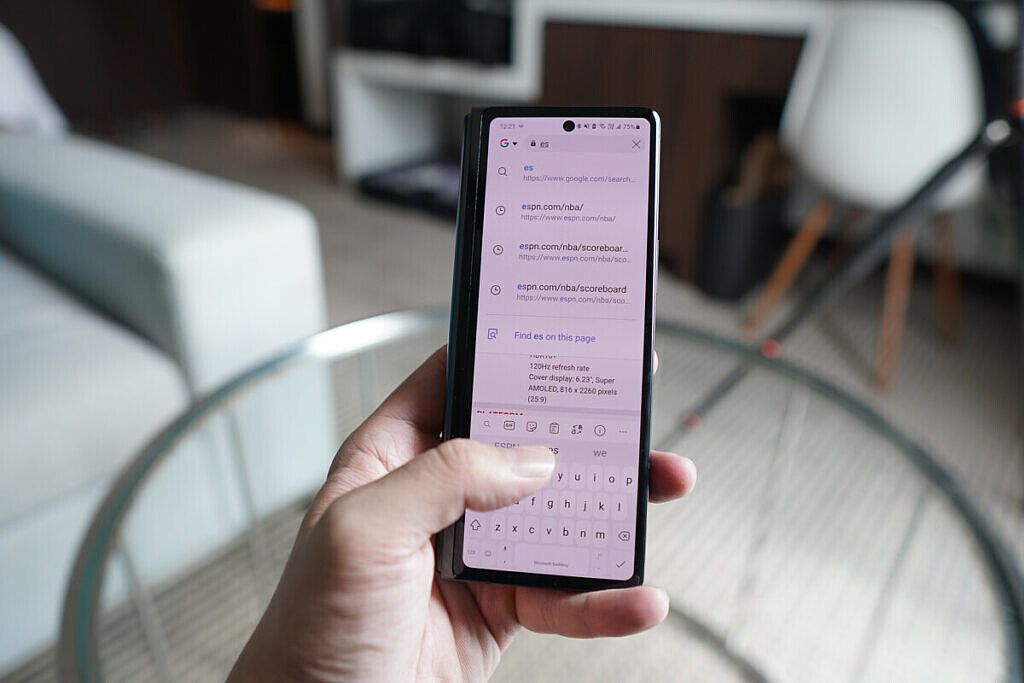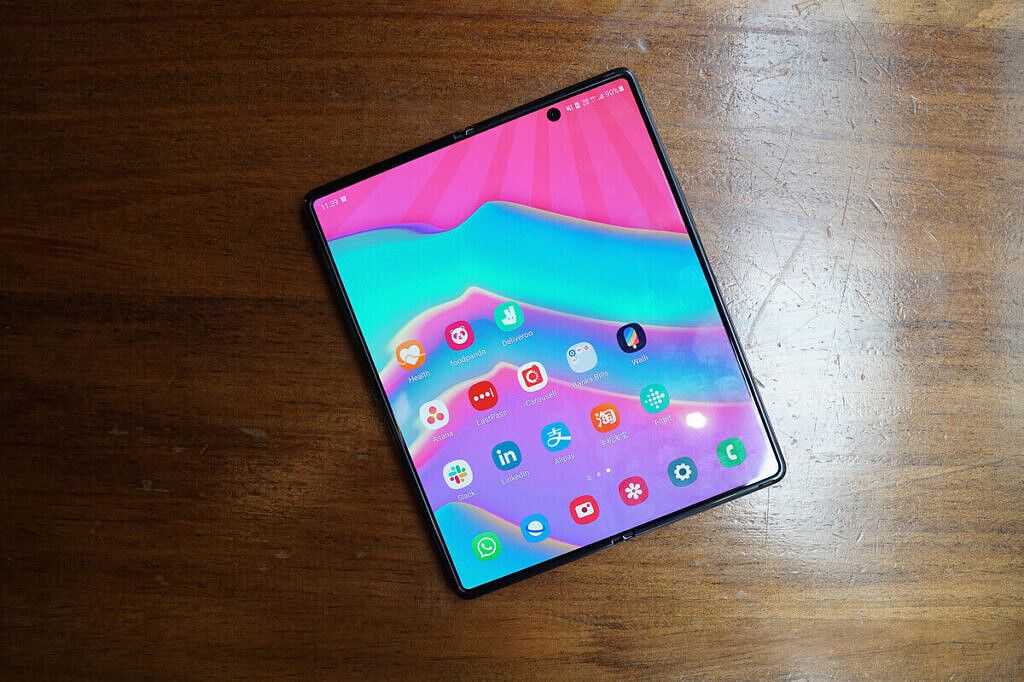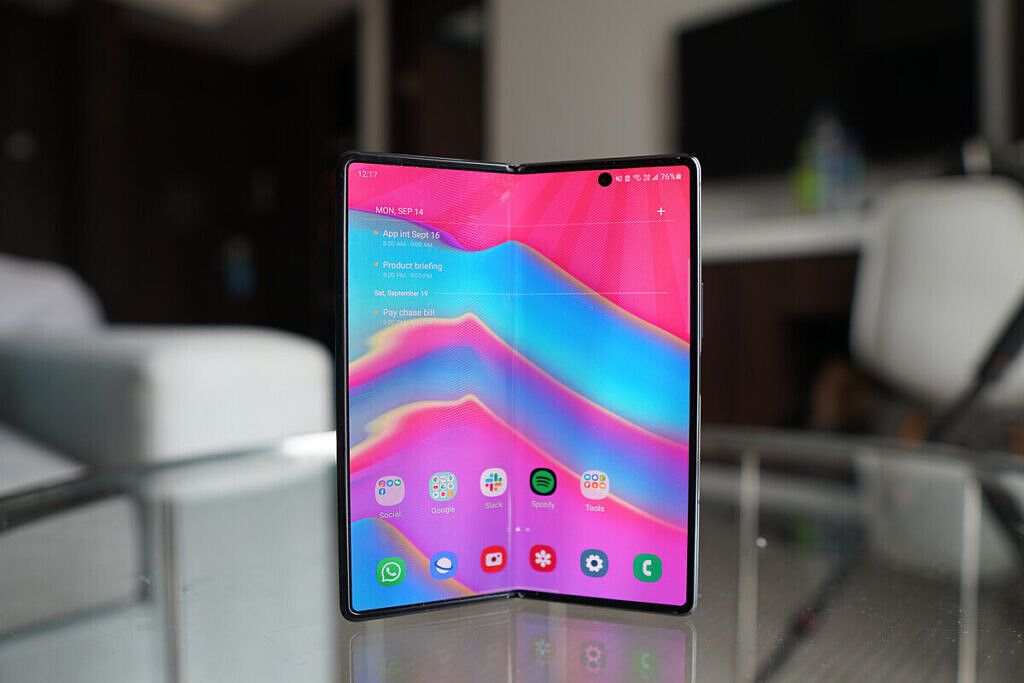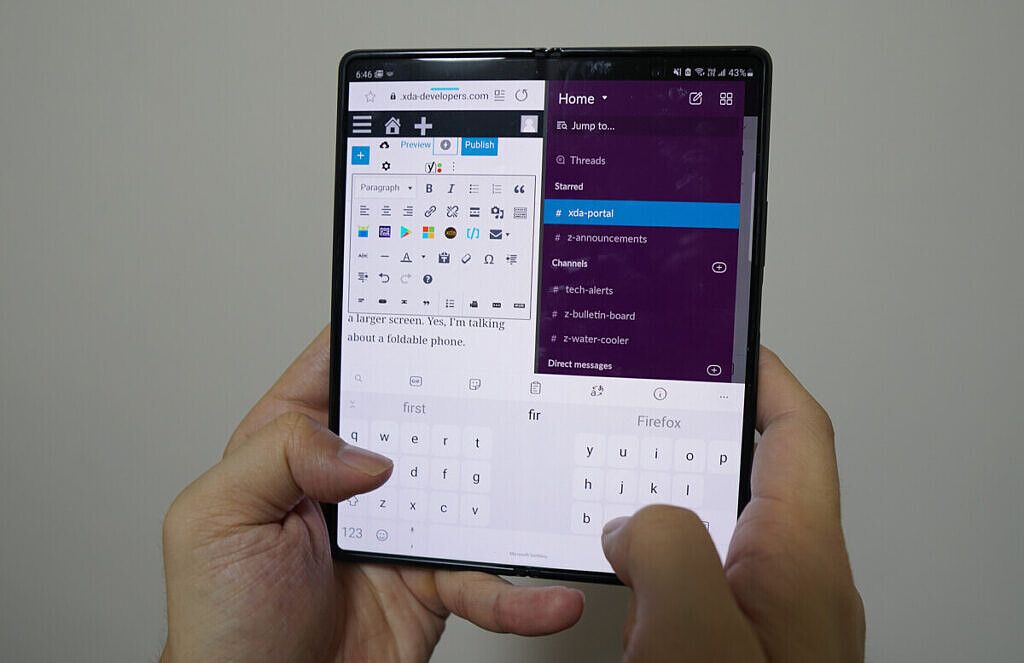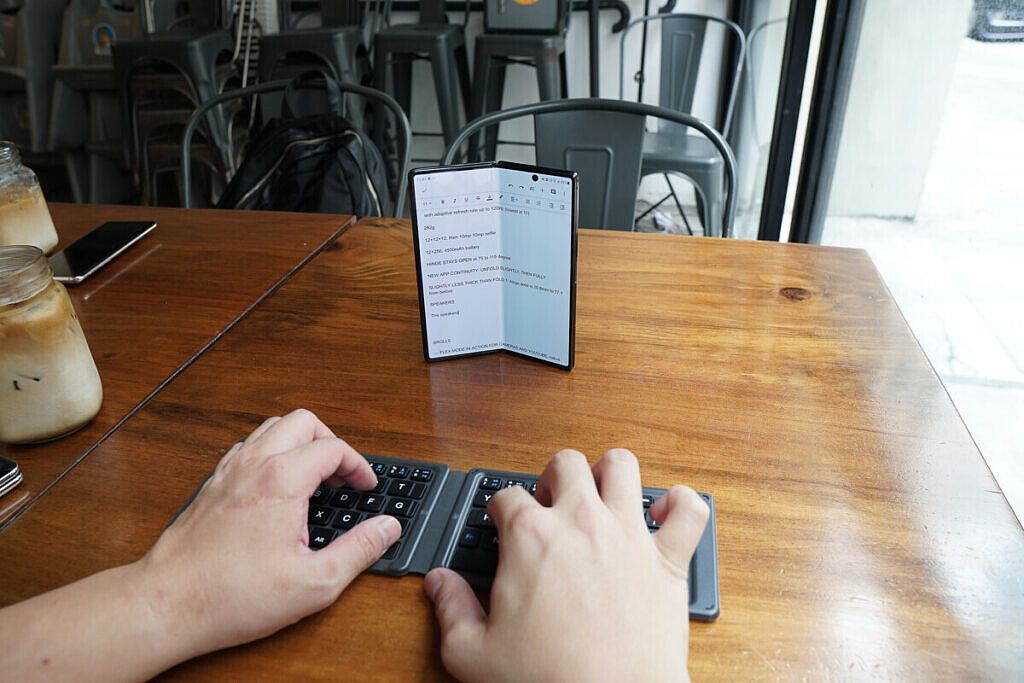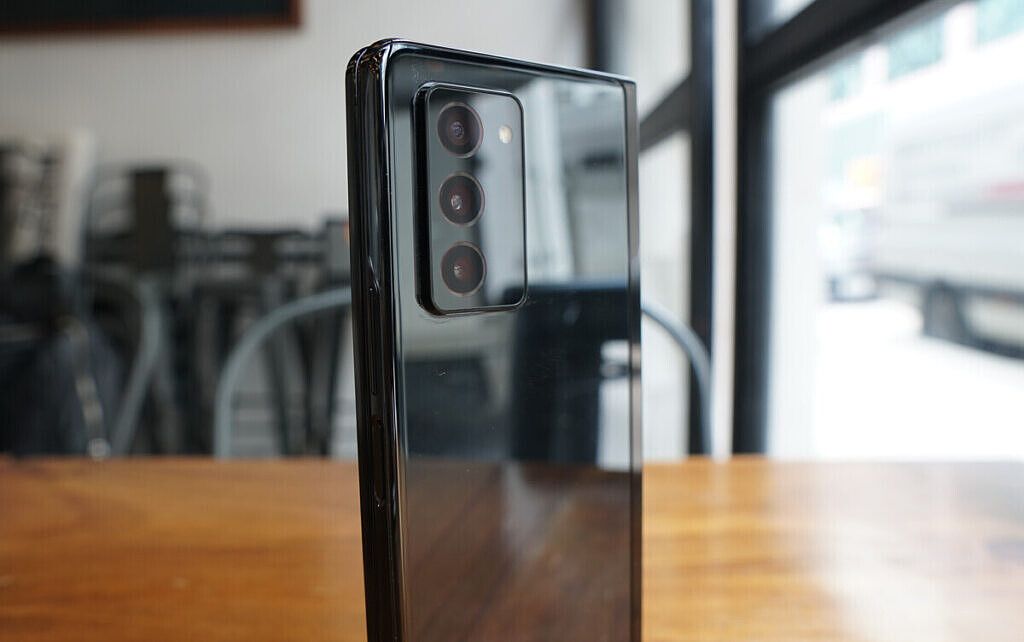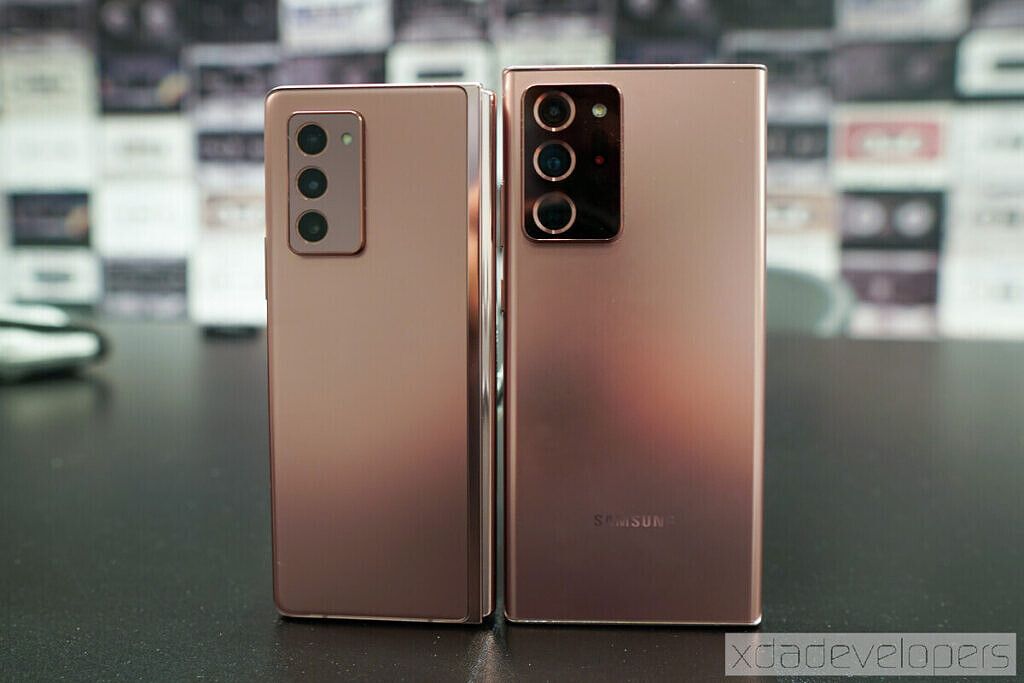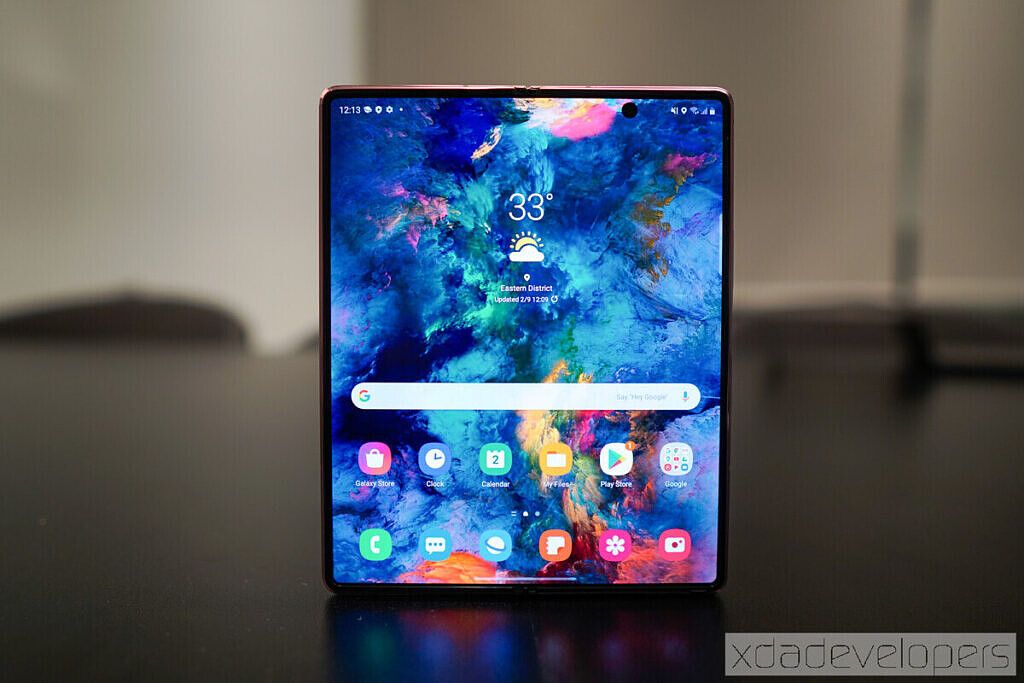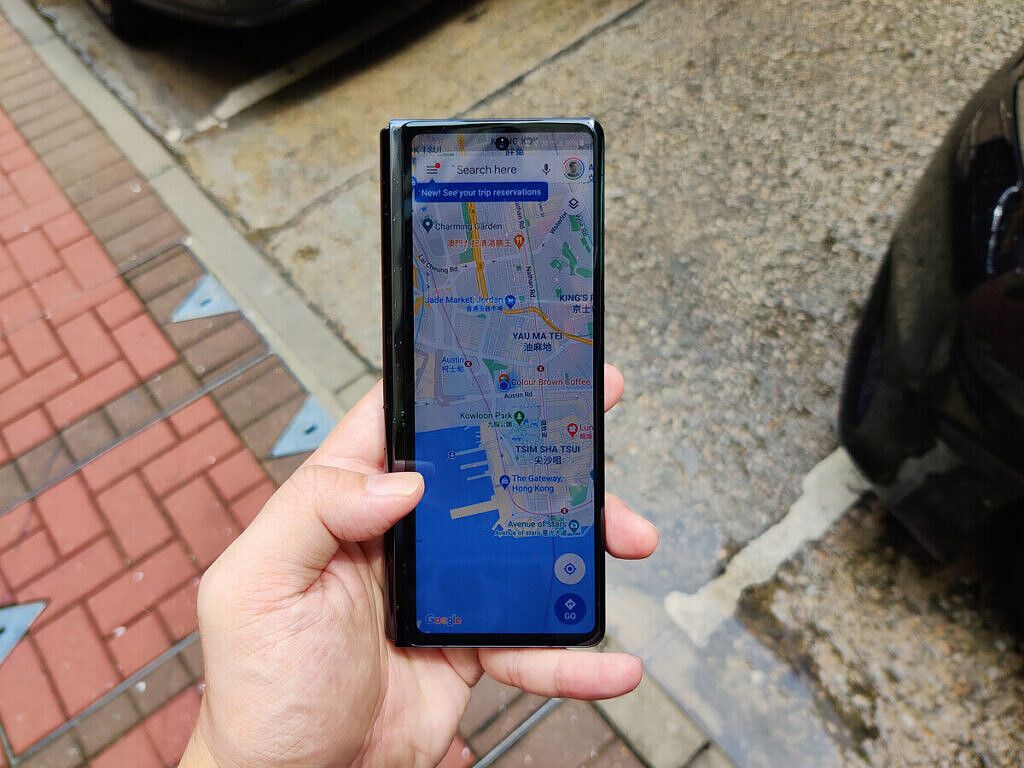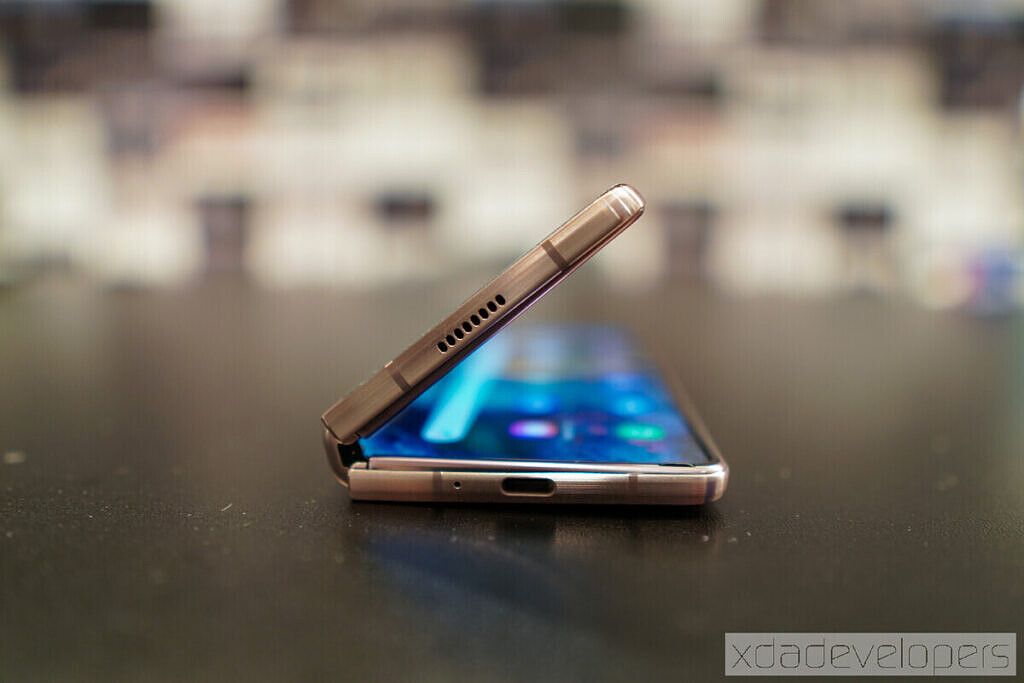Has any consumer electronics company bounced back from embarrassing PR fiascos better than Samsung in recent years—or ever? When Samsung's long-teased, much-hyped debut foldable phone literally broke in the hands of some of the world's most famous tech reviewers after a day or two, it should have been the death knell for the ambitious product. But just like its bounceback from the Note 7 battery fiasco with the critical and commercial hit Galaxy S8, Samsung weathered the Fold storm with a successful relaunch, followed by a well-received Z Flip a few months later. And now, just some 17 months after unwanted headlines, Samsung has released its first foldable masterpiece: the Galaxy Z Fold 2.
I've been using this thing heavily for the past week — the first three of which I documented with a series of "ongoing reviews" — and I feel confident in saying that, barring very unlikely surprises, the Samsung Galaxy Z Fold 2 is my phone of the year. And I've tested a lot of phones this year—not just almost every flagship from every brand, but also extended time with niche devices not available to most Americans, such as Huawei's own foldable, the Mate XS.
I think we can all agree that for a smartphone to be considered "great", it has to nail these five key areas: a beautiful screen with a modern design; capable cameras; powerful processor; fast and responsive UI; and battery life that can last all day. The Fold 2 checks all five boxes, plus a sixth one that puts it into "masterpiece" territory: it offers a unique new user experience that almost no one else can match.
The Samsung Galaxy Z Fold 2 offers an experience no one else can match right now
And that's all I keep coming back to ultimately as I evaluate this device. I understand releasing a $2,000 phone in the middle of a global pandemic may be considered extravagant to some, but we all have different spending power and perceived value of a dollar. For those who are willing to spend $2,000, the Galaxy Z Fold 2 offers an experience no other smartphone or mobile device can offer right now (well, maybe the first Fold offers something similar). You can't say that about any other phone right now. Not the iPhone 11, not the Pixel 4a, not the Z Flip, which behaves like a regular smartphone mostly, and not even the Microsoft Surface Duo.
Here's why the Samsung Galaxy Z Fold 2 stands out from everything else:
Samsung Galaxy Z Fold 2
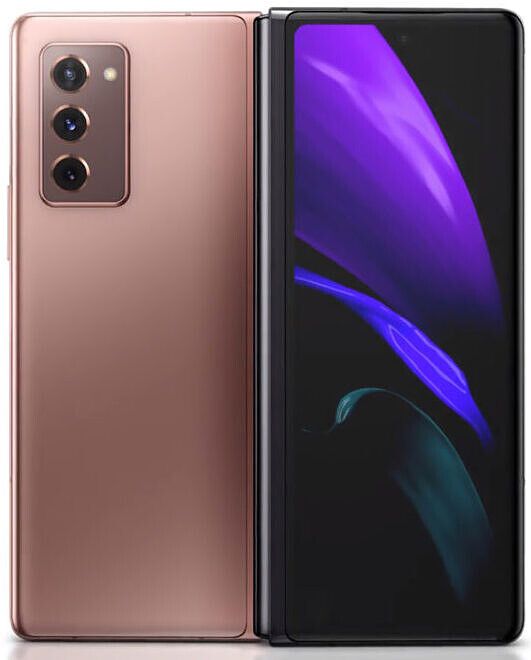
- Samsung
- View at Samsung
Samsung Galaxy Z Fold 2 Forums
Hardware
The easiest way I can explain the Galaxy Z Fold 2's hardware design to someone who doesn't follow the smartphone scene is that it's essentially a square-ish small tablet with a 7.6-inch plastic bendable OLED screen that folds vertically at the halfway point to close like a book. Once folded, there's a "cover screen" that allows the user to use it like a narrow smartphone that resembles either a thick chocolate bar or a chunky TV remote.
It's the exact same design philosophy used in the first Fold, but the Galaxy Z Fold 2 has improved in two major areas. One, both the outside cover screen and the inside tablet screen have increased in size, stretching as far to the four corners as possible, making for a near bezel-less all-screen look.
Second, the hinge that serves as the spine of the device has been significantly strengthened. It feels sturdier, refined, and unlike the first Fold, it can stay halfway folded at a variety of angles, sort of like a laptop hinge.
When unfolded, the Samsung Galaxy Z Fold 2 is impressively thin at 6.9mm. Once folded, it feels slightly chunky at 16.8mm at its thickest point. If you're wondering, "how come the folded measurement isn't just double the unfolded measurement?" That's because the Fold 2 doesn't bend entirely flat—there is a slight gap/opening at the hinge area, just like with the first Fold. But unlike the first Fold, whose gap area wobbles and has slight give if you grip it tight, the Galaxy Z Fold 2's opening feels tight and firm. It's also slightly heavy at 282g.
If you use the Z Fold 2 without a case, the in-hand feel is premium: all glass and metal. The relatively narrow shape when folded means it's a very easy device to securely grip, too.
Due to the foldable nature of the Z Fold 2, Samsung was not able to put an in-display fingerprint reader; instead, there is a side-mounted fingerprint scanner/power button combo on the right side of the device, below the volume rocker. It's in the middle so it's easy to get to with either hand. You have the option to let the scanner scan with just a finger tap or a physical press of the clicky power button. There's also 2D face unlock, using the 10-megapixel selfie camera housed inside the small hole-punch cut-out near the top of the cover screen, but this is obviously less secure than the fingerprint scanner.
Under the hood is Qualcomm's Snapdragon 865 Plus, paired with 12GB of LPDDR5 RAM. Both of these are the fastest and highest-end components available on the Android side of things. Everything zips around on the Galaxy Z Fold 2. In terms of storage, Samsung is only shipping 256GB storage options to most regions, including the US; surprisingly, Hong Kong (where I'm currently based) gets a 512GB storage variant, although the retail price here converts roughly to $2,100, making it slightly more expensive here than in the US.
Display
The outside screen, despite measuring 6.2-inches, is still narrower than most phones on the market, due to that 25:9 elongated aspect ratio. This means typing accurately on this is slightly cramped, but manageable with some practice. After the first day, I can tap away at the outside keyboard with one hand or two. It's a big improvement over the first Fold, whose 4.5-inch cover screen was far too cramped to type on.
This ultra-long aspect ratio is mostly fine as all apps adjust and fill the entire surface, but if you are posting an Instagram Story with this screen, expect the top of your story to not show on most phones. The fix is to shrink the story's height slightly on the outside screen; or simply post with the inside screen, where Instagram runs at a more conventional aspect ratio.
Despite the cover screen's weird aspect ratio and pedestrian 816 x 2260 resolution and 60Hz refresh rate, I still find it to be a good looking screen, with vivid colors and sharpness. This is, after all, a Samsung AMOLED panel. Throughout my review period, I used it to watch videos and chat with friends when I was on trains and walking around town. As I said in my earlier coverage of the Samsung Galaxy Z Fold 2 : While the Fold 1 felt like a tablet that's masquerading as a smartphone, the Fold 2 is as much tablet as it is a smartphone.
Even if the outside screen is very usable, you're still going to want to unfold the thing every chance you get, because the inside screen is a stunning 7.6-inch, 1768 x 2208 120Hz panel. Yes, there is still a noticeable crease if you look at the screen from certain angles, but looking at it straight on, you won't notice it.
In terms of color accuracy and white balance, this bendable "ultra-thin glass" mostly keeps up with some of the best panels on the market, although overall max brightness is slightly lower than the outside cover screen and the Galaxy Note 20 Ultra.
Software
The Samsung Galaxy Z Fold 2 runs Android 10 with One UI version 2.5 on top. My unit is a Hong Kong retail unit on loan from Samsung Hong Kong; it's mostly free of bloatware with the exception of two clear instances of duplicate apps due to Samsung's insistence on pushing its own apps and ones already offered by business partners. There are two web browsers out of the box (Samsung Internet and Google Chrome) and two keyboards (Samsung Keyboard and Microsoft SwiftKey). Both keyboards allow a split keyboard for easier thumb-typing on the larger screen.
The One UI software version running here is snappy, with special features built specifically for the Galaxy Z Fold 2, such as the ability to display apps in tablet mode instead of just blown up oversized smartphone mode on the large inside screen. For example, in Spotify and Samsung's own files app, if you choose to display them in tablet mode, you will see a two-pane layout that resembles something like the desktop app. If you keep it as just a smartphone display, you get a supersized version of the smartphone app.
There's an intuitive multitasking system: When you have one app opened already, simply swipe from a bar tucked away at the side of the screen – Samsung used to call this "Edge Panel" – to bring out a menu; from here, you can select a second app to open in split-screen view. The splitting can be done vertically or horizontally per your choice. You can open three apps at once or even more in floating windows. But really, three apps at once should be enough for most.
Some apps, particularly YouTube and Samsung's camera app, can also change their layouts on-the-fly if you fold the device slightly. Samsung calls this "Flex Mode", essentially it will display crucial information (such as the YouTube video or camera viewfinder) on the top half of the screen, while the bottom half displays controls. This means you can prop the Galaxy Z Fold 2 flat on a desk for an easy photography experience or read YouTube comments on the bottom half of the screen while a video plays on the top half.
Using the Samsung Galaxy Z Fold 2 for productivity and media
From the moment Samsung first showed off a prototype of the first Galaxy Fold (back in November of 2018), I was drooling over the idea of having a larger screen in my pocket as my main device because the nature of my work means I don't have a set work schedule nor do I have a set desk. I have work coming in at all hours of the day, and I like to work outside at coffee shops if possible. With a folding phone, I knew my dream of writing directly from my phone was near reality. I did that with the Fold 1 already, but the experience on the Fold 2 is even better due to the larger screen. As I documented in my ongoing review, I did an entire day's worth of work on the Samsung Galaxy Z Fold 2 with the help of a foldable Bluetooth keyboard for heavier writing sessions. The Galaxy Z Fold 2 can handle WordPress, Gmail, Slack, and Asana—all key apps that I use—in split-screen view without issues.
Video calls – an increasingly regular event due to the current pandemic, work-from-home era – also worked great on the Samsung Galaxy Z Fold 2, since the device can prop itself up with the hinge that locks in place.
With a 7.6-inch tablet-like screen, you'd think the Galaxy Z Fold 2 would be perfect for binging on NetFlix or YouTube—and you'd be right, sort of. While we are getting a larger video canvas than just about any other flagship smartphone can offer, there is major letterboxing (digital black bars at top and bottom) for most videos due to that odd, almost 1:1 aspect ratio. It's not a deal-breaker, but I would almost rather not make my videos full screen; since a chunk of the screen is dedicated to black bars anyway, I might as well just watch videos in split-screen mode with another app running.
The dual-speaker system of the Samsung Galaxy Z Fold 2 is exceptional, however. They pump out loud, full audio with a tiny bit of bass kick, too. When I'm using the Fold 2 at home, I am completely okay just watching videos with the speakers without feeling the need to put on earbuds or headphones.
Cameras
There are five cameras in all on the Samsung Galaxy Z Fold 2—a triple camera array consisting of a trio of 12MP shooters, along with two 10MP selfie cameras on each screen. The main camera on paper looks quite a bit inferior to the Galaxy Note 20 Ultra, but the reality is that, other than zoom shots, the Galaxy Z Fold 2 holds up pretty well.
In particular, the main cameras are quite good. You'd think the Note 20 Ultra, with that much-hyped 108MP camera and really large 1/1.33" sensor, would be the better of the two in low light, right? The Fold 2's 12MP camera not only holds its own, but it also beats the Note 20 Ultra in extreme low light situations (though this shouldn't be a surprise, since a 108MP sensor needs a lot more light to fill all those extra pixels). For example, the below set of images were captured in my near pitch-black room; with all lights turned off and just a bit of light coming in from the window, you can see the Galaxy Z Fold 2 pulled in more light than the Note 20 Ultra did. I inserted a third competitor, the Xiaomi Mi 10 Ultra with its 48-megapixel, 1/1.32" sensor, into the mix just for reference.
Notice the Mi 10 Ultra grabbed the most light, but the colors are unnatural and way off. The Galaxy Z Fold 2's image is probably the preferred image of the three. Keep in mind, this is with night mode off—I wanted to see how these cameras fared in straight point-and-shoot. When we turn on night mode, we can see the Note 20 Ultra catches up and produces a more natural shot, whereas the Galaxy Z Fold 2's image took on a yellow hue. The iPhone 11 Pro's image has the most natural colors, but there's a lot of noise and a noticeable lack of details if you zoom in. The Mi 10 Ultra, as before, got the colors way off.
But these are really niche shooting situations. For the most part, using the Galaxy Z Fold 2 out in the real world—and grabbing real shots—will leave users satisfied almost all the time. See the samples below: The Fold 2's shots are sharper, more well-detailed, and have better focus than those from the Note 20 Ultra. All of these photos are shot with the main 12MP camera.
You may have noticed there's a selfie in the above set. That's because it's possible to take selfies with the main camera system of the Galaxy Z Fold 2 thanks to the fact that the phone has a screen on each side of the device when unfolded. This is one of my favorite camera use cases with the Fold 2—being able to shoot selfie photos or videos with the main camera system, particularly the ultra wide-angle camera.
This means even selfies in dark spots look better than usual, because you don't have to use the measly 10MP selfie camera with a tiny sensor; instead, you can shoot with the main camera. In the first set of selfies below, notice how much better the shot with the main camera turned out over the selfie camera shot.
The video performance on the Galaxy Z Fold 2 is great too, with stabilization on par with the last couple of Samsung flagships. You can't, however, shoot 8K videos like you can with the Note 20 Ultra or S20 Ultra, but 8K video is a bit overkill in my opinion anyway.
The ultra wide-angle and telephoto cameras both get the job done, though they're nothing spectacular. The ultra wide-angle cameras on the OPPO Find X2 Pro or the Huawei P40 Pro produce sharper images than the Z Fold 2's; and zooming beyond 5X with the Galaxy Z Fold 2 results in janky photos (it maxes out at 10X zoom).
Battery life and charging
Considering that the Fold 2 has a larger inside screen that refreshes at up to 120Hz and the battery size only increased slightly from 4,380 mAh to 4,500 mAh, I was concerned about battery life on the Fold 2. But to my surprise, the Samsung Galaxy Z Fold 2's battery life is good—consistently lasting me through the day. Samsung's UI does this annoying thing in which they only show you screen on time in 24 hour periods that begin at midnight, and since I don't sleep until 3 or 4 AM, that means this metric includes what I consider to be the "previous day's usage"; my day doesn't end at 11:59 PM.
In six days of heavy use, the Samsung Galaxy Z Fold 2 never died on me once
In other words, I can't tell my exact daily screen-on time with One UI. But I can say this: In my six days of heavy use, the phone has never died on me once. I'd unplug at 100% in the morning around 10 AM, and even well into 2 AM—this is 16 hours later—I'd still have around 10-20% battery life. That's impressive, considering how heavily I used it.
Charging speeds are slightly disappointing, though. Out of the box, the Galaxy Z Fold 2 comes with a 25W "fast" charging brick, and that's the maximum speed it supports. It takes about an hour and five minutes to top up the battery from 0 to 100%. This is probably acceptable speeds for the average consumer who doesn't have access to Chinese phones. But I jumped over from the Xiaomi Mi 10 Ultra, which comes with a 120W charging brick and can top up from 0 to 100% in 23 minutes. Even if something so extreme isn't possible in this design just yet, I would have welcomed 65W or even 45W charging. It's interesting that both the Galaxy Note 20 Ultra and Galaxy Z Fold 2 don't support Samsung's fastest 45W charging tech, even though they cost more and launched later than the Galaxy S20 Ultra which supports the tech.
Durability concerns?
The original Fold, as mentioned at the top, had a disastrous pre-launch when several units broke in the hands of reviewers, mainly due to dust and small particles getting into the hinge. Samsung fixed that by the time the Galaxy Fold hit retail stores, and a year in, there haven't been any major issues with the Fold 1 breaking. My unit still works fine, for example. So in other words, I think the fragility of foldable phones may be exaggerated. The Galaxy Fold has been durable for me, and I don't feel concerned when handling the Galaxy Z Fold 2. I even used it under light rain the other day, and it's been fine.
But still, I'm mostly a city guy who works off a computer (or a Galaxy Z Fold 2!). If you're someone who goes to the beach often or works in construction, you may not want to take the Z Fold 2 with you. So while the Fold 2 is not fragile, a regular candy bar phone will still be more durable.
Final thoughts
As I already spoiled in the beginning, I absolutely love the Samsung Galaxy Z Fold 2 and consider it the phone of the year so far, with a very slim chance of anything else topping it in the next few months. The Galaxy Z Fold 2 doesn't just bring premium hardware, tiptop performance, good cameras, and a stunning screen, it changes the way I use a mobile device.
The Galaxy Z Fold 2 proves that modern-day smartphones are actually pocket computers
I've often thought how the term "smartphone" is outdated since most young people don't make calls anymore and we use these devices to do almost everything. I think "portable computer" is a more accurate term to describe modern-day smartphones, and the Samsung Galaxy Z Fold 2 really pushes that notion forward.
The $2,000 asking price will be too much for some, but anyone who's into smartphones—and let's face it, if you've read this far into an XDA article, you are a phone geek—will have no choice but respect what Samsung has done here. And I'm convinced this is the direction in which all smartphones will head in the future. In another five years, I'd bet most of us will have a pocket computer that unfolds into something larger.

Samsung Galaxy Z Fold 2
The Galaxy Z Fold 2 is likely my phone of the year, as it offers an experience no other smartphone or mobile device can offer. That's a powerful thing to say, but the $2,000 is money well spent.

